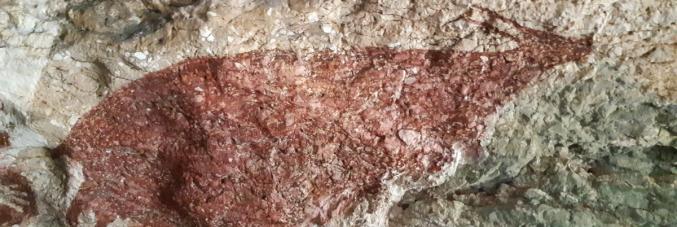
Sulawesi, the oldest rock paintings in the world
17.06.2021
The anthropologist and lecturer at the Department of Biomedical Sciences of the University of Padua, Franco Viviani, writes in his article Finding and Losing the World’s Oldest Art in Sulawesi, published in the digital magazine Sapiens. Viviani describes the level of deterioration found in some of the oldest rock paintings in the world.
Viviani found these paintings in 1985, by chance, during an expedition. He had decided to photograph and collect details of the cave paintings found on the island in Sulawesi, Indonesia. Only later would it be discovered that these were the oldest representations of animals in the world. The images found this particular karst dated back nearly 45,000 years ago (cave painting found in the Franco-Cantabrian region are more than 40,000 years old).
In 2019, during the second expedition of the same cave, they discovered that the representations and palm prints were repainted, making them virtually impossible to date. The photos taken by Viviani are the only evidence of the rock representations prior to this restoration work.
Viviani explains, “In that area, not only are there excellent representations of animals, but also so-called "therianthropic images”. Therianthropes are images representing figures that are part human and part beast. As it turns out, this discovery completely changed the history of art.”
The rock paintings found on the island of Sulawesi are crumbling. Perhaps pollution or climate change are modifying the level of humidity in this region and inducing microorganisms that take root on the walls. The photographs collected allow researchers to verify the causes and the speed of the deterioration of the rock paintings of the Indonesian island in detail. To avoid its complete disappearance, scholars from Griffith University have proceeded to photograph, date and catalogue the cave painting remaining in the karst of Maros.



